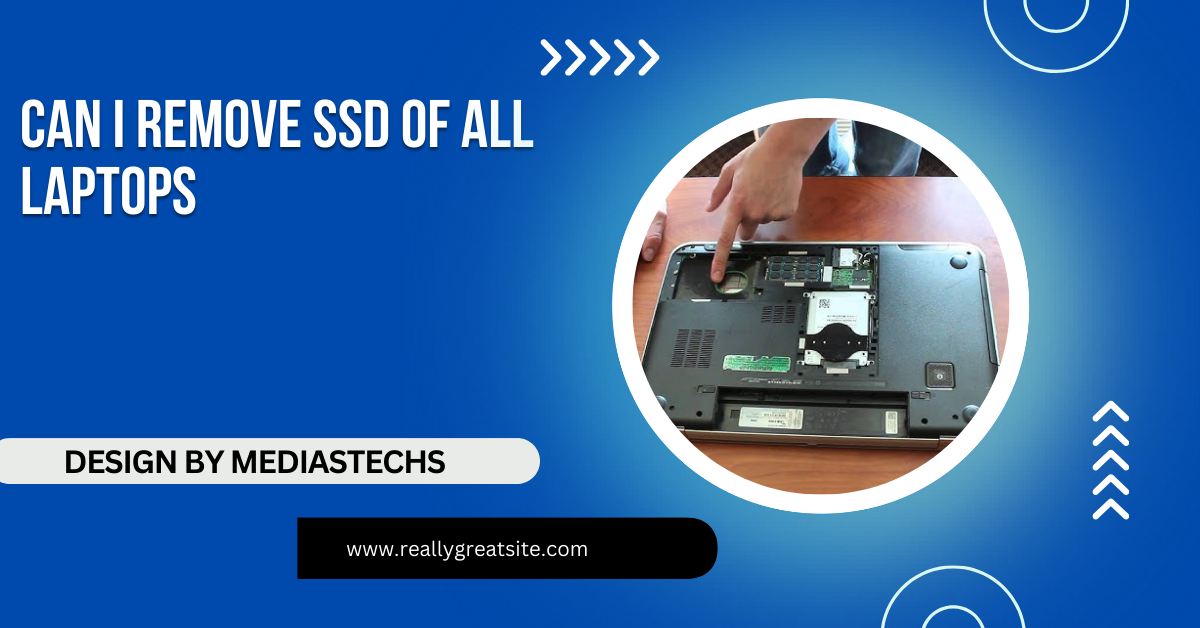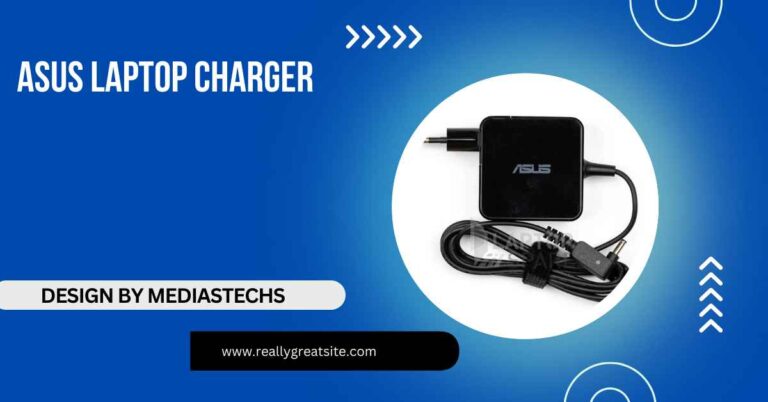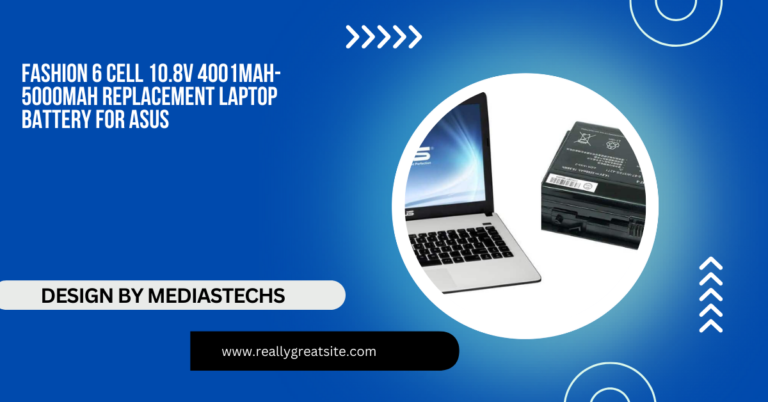Can I Remove Ssd Of All Laptops – A Comprehensive Guide!
Learn if you can remove the SSD from all laptops. While many allow SSD removal, some ultrabooks and newer models have soldered SSDs that can’t be replaced.
In this article, we explore whether you can remove the SSD from all laptops, discussing the different types of laptops and their accessibility to SSDs. We provide detailed steps for safely removing or upgrading your SSD. Additionally, we answer common questions about SSD removal and offer tips for troubleshooting, upgrading, and data transfer.
What Is an SSD and Why Would You Want to Remove It?

Before diving into whether you can remove an SSD from all laptops, let’s first understand what an SSD is and why you might want to remove it.
An SSD (Solid-State Drive) is a type of data storage device that uses flash memory to store data, making it faster and more reliable than traditional Hard Disk Drives (HDDs). SSDs are typically used in modern laptops due to their speed, lower power consumption, and durability compared to older HDD technology.
There are several reasons why someone might want to remove their SSD from a laptop:
- Upgrading Storage Capacity: As digital files such as games, videos, and software grow in size, your laptop’s SSD may fill up quickly. If you need more space, upgrading to a larger SSD can significantly improve your laptop’s performance.
- Data Transfer: You might want to remove your SSD to transfer important files to another device, such as an external hard drive or desktop computer. This can be particularly useful when you’re preparing to migrate data before reinstalling your operating system or switching to a new laptop.
- Troubleshooting or Diagnostics: In some cases, users may want to remove the SSD to troubleshoot issues with the laptop. If your laptop is experiencing crashes or system failures, isolating the SSD can help determine if it’s the source of the problem.
- Recycling or Repurposing: If your laptop is outdated and no longer in use, removing the SSD allows you to recycle the laptop while retaining valuable data storage or repurpose the SSD in a different device like a desktop or external drive.
Can You Remove the SSD from All Laptops?
The answer is no — not all laptops allow you to remove or replace the SSD. The ability to remove or replace the SSD depends on the design of your laptop, and there are three common scenarios:
1. Laptops with Removable SSDs (Most Common):
The majority of modern laptops, particularly gaming laptops, business laptops, and consumer-grade models, feature easily accessible SSD slots. These laptops are designed to allow users to upgrade or replace components like the SSD, RAM, and battery.
Laptops with removable SSDs typically have a dedicated compartment or access panel on the bottom or side of the device. Once you remove the screws or latches securing the panel, you can access the SSD, disconnect it, and remove it for upgrading or replacement.
Read More:http://How To Use Backblaze To Switch Laptops – A Guide to Using Backblaze!
Advantages:
- Easy to upgrade to a larger SSD.
- It’s a relatively simple task to remove or replace the SSD.
Allows users to troubleshoot problems by removing the SSD and accessing or transferring data.
Examples: Many business laptops (Lenovo ThinkPad series, Dell Latitude series), gaming laptops (MSI, Razer Blade, Alienware), and consumer-grade laptops (HP Pavilion, Acer Aspire) feature accessible SSD slots.
2. Ultrabooks and Thin & Light Laptops (Limited Accessibility):
Ultrabooks and thin-and-light laptops are popular for their sleek, compact designs. However, due to the emphasis on portability, these devices often sacrifice the flexibility of user-serviceable parts. While some ultrabooks and slim laptops feature a removable SSD, others may be more challenging to access. These models may require you to disassemble the laptop further to reach the SSD, which can be time-consuming and complicated.
In some cases, ultrabooks and thin laptops use proprietary SSDs that may not be easily removed or replaced without specialized tools.
Advantages:
- Allows for upgrade or replacement if accessible.
- Generally, lighter and more portable than standard laptops.
Disadvantages:
- Increased difficulty in accessing the SSD, requiring more time or professional help.
- In some models, the SSD may be glued or soldered to the motherboard, making it virtually impossible to remove or upgrade.
Examples: The MacBook Air, Dell XPS 13, and HP Spectre x360 are some of the thin-and-light laptops that often come with either soldered or difficult-to-access SSDs.
3. Laptops with Soldered SSDs (Not Removable):
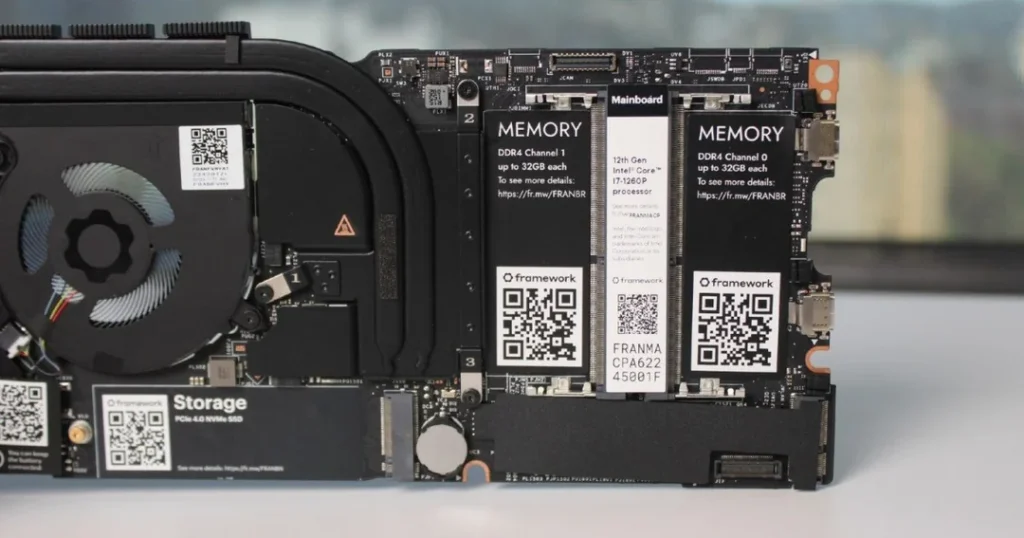
Some laptops, particularly ultra-compact or budget models, feature SSDs that are soldered directly to the motherboard. This design choice saves space and reduces costs, but it also means that users cannot remove or upgrade the SSD. If you’re looking to upgrade your storage in such laptops, you may be out of luck unless the manufacturer offers an official upgrade option, which is rare.
Advantages:
- Reduces space and weight for ultra-thin laptops.
- Cost-effective for manufacturers.
Disadvantages:
- No user upgrades are possible; you’ll have to replace the entire motherboard to increase storage.
More difficult to repair or replace faulty SSDs.
Examples: Certain budget laptops, like lower-end Chromebooks and newer MacBook Pro models, often feature soldered SSDs.
How to Check if Your Laptop’s SSD Is Removable:
If you’re not sure whether your laptop’s SSD is removable, here are some steps you can take to find out:
1. Check the Manufacturer’s Documentation:
Your laptop’s manual, datasheet, or the manufacturer’s website often provides details on whether the SSD is user-replaceable. Look for sections on hardware upgrades or expansion options. If you have a service manual, it may offer specific instructions on accessing and removing the SSD.
Read More:http://How To Bring A Laptop As A Gift – A Step-by-Step Guide!
2. Look for Upgradeable Panels or Compartments:
Many laptops with removable SSDs have a small panel or compartment at the bottom or side that you can remove. This is where the SSD will usually be housed. If you can see screws or access points on the bottom of the laptop, it’s a good indicator that the SSD is accessible. You can often spot this by checking for markings indicating “storage” or “SSD.”
3. Use Online Resources:
If you’re still unsure, websites like iFixit provide detailed teardown guides for thousands of laptop models. You can search for your laptop model on iFixit to see if the SSD is removable and how to do so safely. These guides often include high-quality images and step-by-step instructions.
4. Seek Professional Help:
If you’re not confident in your ability to open up your laptop, or if you’re worried about damaging the device, consider taking it to a professional technician. Many repair shops can tell you whether the SSD is removable and can assist with the upgrade or removal process.
Steps to Safely Remove an SSD from a Laptop:
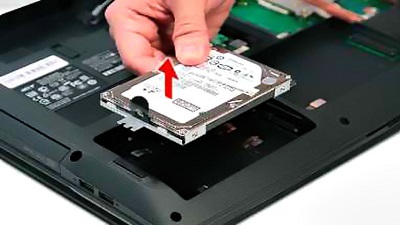
If your laptop allows you to remove the SSD, follow these detailed steps to ensure the process is done safely:
- Power Off and Disconnect: Always turn off your laptop and unplug it from any power source before working with its internal components.
- Remove the Back Panel: Depending on your laptop, you may need to remove screws to open the back panel. Use a screwdriver to carefully remove the screws (keep them in a safe place) and gently pry the panel open.
- Locate the SSD: Once the back panel is removed, locate the SSD. It will usually be a small rectangular drive secured by screws or a mounting bracket. If you’re not sure which component is the SSD, consult the manual or use online guides.
- Disconnect the SSD: Most SSDs are connected via a small SATA or M.2 connector. Gently disconnect the SSD from its connector. If it’s secured with screws, carefully remove them.
- Remove the SSD: Once disconnected, slide the SSD out of its slot. Be gentle to avoid damaging any nearby components.
- Install a New SSD (Optional): If you’re upgrading or replacing the SSD, insert the new one into the same slot, ensuring it’s connected securely.
- Reassemble the Laptop: Once you’ve removed or replaced the SSD, carefully reassemble your laptop by securing the back panel and screws. Make sure everything is tightly fastened before powering the laptop back on.
FAQ’s
1. Can I remove the SSD from a MacBook?
It depends on the model; older MacBooks have removable SSDs, but newer models have soldered SSDs.
2. How can I check if my laptop’s SSD is removable?
Check your laptop’s manual or use online guides to see if it has a removable SSD or if it’s soldered.
3. Is removing the SSD from a laptop safe?
Yes, as long as you follow the proper steps and take precautions to avoid damaging other components.
4. Will removing the SSD erase my data?
No, removing the SSD doesn’t erase data, but formatting or reinstalling the OS will.
5. Can I replace the SSD in any laptop?
Not all laptops allow SSD replacement, especially if the SSD is soldered to the motherboard.
Conclusion: can i remove ssd of all laptops!
The ability to remove or replace the SSD in your laptop depends largely on the laptop’s design and model. Many laptops, especially gaming and business laptops, allow easy SSD removal, but others, like ultrabooks or ultra-thin models, may have soldered or difficult-to-access SSDs. Always check your laptop’s manual or seek professional help if you’re unsure about how to proceed.

